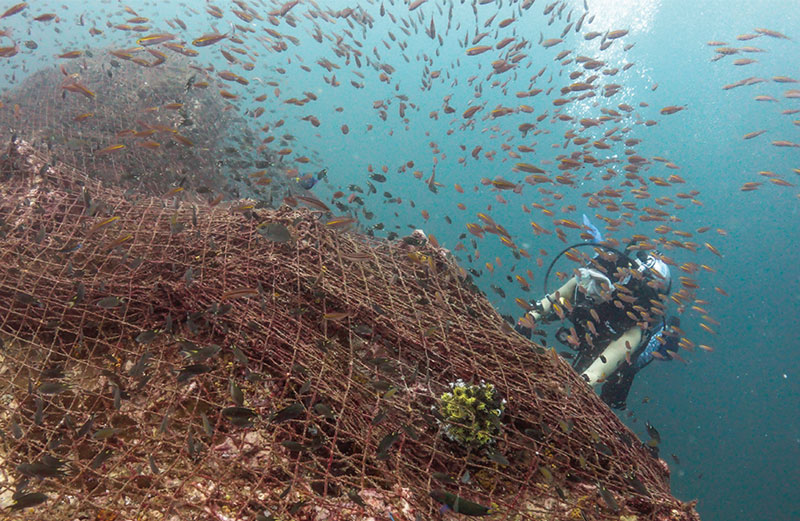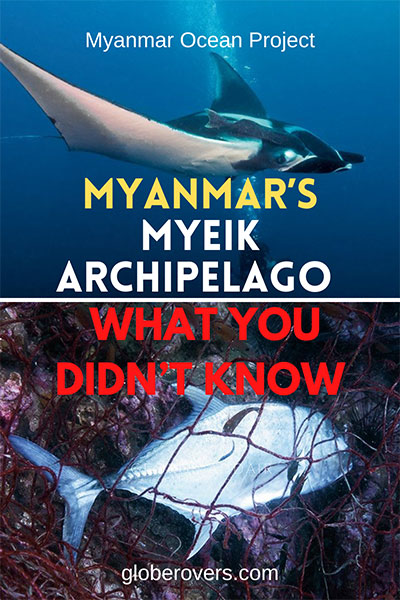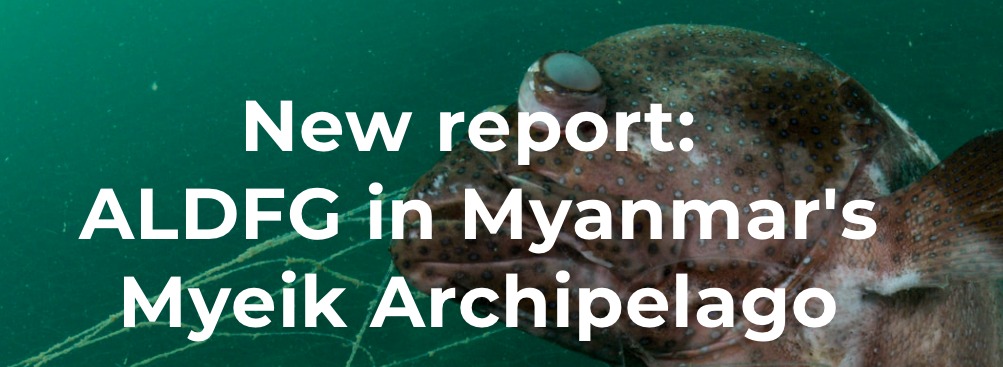
By Thanda Ko Gyi, Myanmar Ocean Project
Thanda Ko Gyi is the Founder and Director of Myanmar Ocean Project. She has been working in marine conservation around Southeast Asia for several years. In 2018, she founded Myanmar Ocean Project with the mission to restore and protect the health of Myanmar’s ocean.
Myeik Archipelago is an off-the-beaten-path diver’s paradise: stunning landscapes, bustling coral gardens, and an extensive array of marine life including everyone’s (and my personal) favorite – Mobula birostris, also known as the oceanic manta ray.
But once you plunge into the deep blue waters, another well-kept secret unveils itself: Myanmar’s ghost net plague.
Ghost nets, also called ALDFG (abandoned, lost, or otherwise discarded fishing gear) are fishing nets that have been left behind by fishing boats either accidentally or deliberately. It is estimated that globally more than 640,000 tons of fishing gear end up in the ocean each year.

In Myanmar, discarded fishing gear is smothering the Myeik Archipelago’s beautiful coral reefs and killing its rich marine life. With few witnesses to the destruction and even fewer people doing something about it, the silent killer continues to catch, maim, and drown whichever ocean dweller comes too close.
In 2017, after discovering a dozen bamboo sharks stuck in a large fishing net during a dive at one of Myanmar’s most popular dive sites, I decided to take matters into my own hands.
With the support of World Animal Protection, Ocean Conservancy, and National Geographic Society, we were able to found Myanmar Ocean Project, a member of the Global Ghost Gear Initiative, the country’s first ocean conservation organization focusing on finding a solution to the ghost gear problem.

In early 2019, supported by Fauna and Flora International and Istituto Oikos, our team of divers set out on an initial research expedition into the string of around 800 islands in Myanmar’s Tanintharyi region. Our mission was to assess the scope of the problem, identify ghost net hotspots throughout the archipelago, and clean up the most harmful nets encountered.
Our survey revealed the problem as much bigger than anticipated. We found tons upon tons of fishing nets covering coral reefs, rocks, and other marine habitats. Over the course of two months, we removed over 1,000 kilograms (1.1 tons) of discarded fishing nets from Myanmar’s waters.
But our clean-up work was merely a drop in the ocean. Safely recovering all the nets we encountered would take hundreds of divers and thousands of dives. We need to address the root causes of discarded fishing nets to solve this issue.

After engaging with local fishing communities, we found several potential causes for this crisis: Firstly, there is no system properly set up for fishing boats to dispose of their old or broken nets in Myanmar’s ports and more remote fishing hotspots. Secondly, there is only one marine park in the whole country guarding biodiversity hotspots against commercial fishing activities and the ghost nets that come with it. And finally, unsustainable fishing practices are rarely exposed and sanctioned.
As Myanmar’s growing fishing industry is now the second-biggest producer of seafood in Southeast Asia measured by quantity, we need to rethink the way our marine resources are exploited, which so many local people depend on for food and income. We must protect and restore the health of our ocean for future generations.
Consumers around the world can do their part too by being more mindful of their seafood consumption. By supporting artisanal fisheries instead of industrialized fishing operations, we can set a new precedent and encourage more sustainable fishing practices.
I hope that Myanmar can turn the tide before it’s too late. I hope that we can save my country’s unique, sensational underwater world. And I hope that I will never have to find bamboo sharks or manta rays entangled in fishing nets ever again.
For more information, visit
Myanmar Ocean Project
☛ Read more: Scuba Diving Myanmar’s Myeik Archipelago
☛ Read more: Unspoiled Mergui Archipelago – Asia’s Paradise



